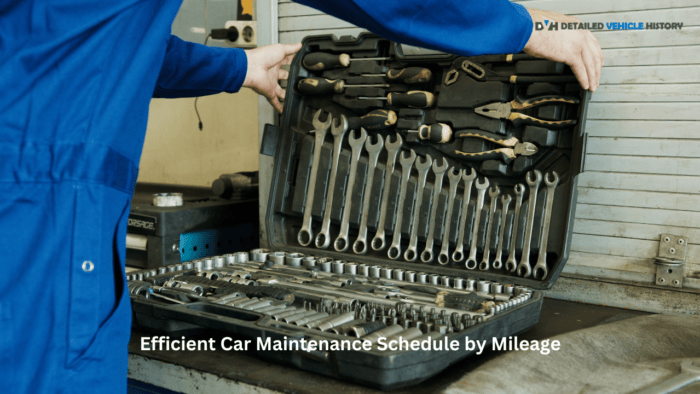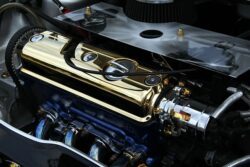Maintaining your car is not just about keeping it clean and shiny; it’s about ensuring it runs smoothly and remains safe to drive. To achieve this, you need a well-structured car maintenance schedule. In this article, we will be taking a look at the importance of an effective car maintenance schedule by mileage or time and the easiest way to get a maintenance schedule for cars.
Car Maintenance Schedule by Mileage or Time: What is an OEM Maintenance Schedule For Cars?
Car maintenance is a critical aspect of ensuring the longevity and reliability of your vehicle. To effectively maintain your car, it’s essential to follow a well-structured maintenance schedule. One important component of this schedule is the OEM (Original Equipment Manufacturer) maintenance schedule. An OEM maintenance schedule is a set of guidelines and recommendations provided by the manufacturer of your vehicle. It outlines the specific maintenance tasks and intervals of time that should be followed to keep your car in optimal condition. These schedules are typically tailored to your car’s make, model, year, and sometimes even the engine type.
Usually, this schedule can be determined by mileage or time. Whichever one you’re comfortable with will work for you as long as you follow the schedule as strictly as possible and keep your vehicle in good condition. What are the differences between scheduled maintenance by mileage and by time? Let’s find out.
Car maintenance schedule by mileage
A car maintenance schedule by mileage is a plan that outlines specific maintenance tasks and intervals based on the number of miles your vehicle has traveled. It serves as a proactive approach to keeping your car in good working condition and preventing potential issues before they become major problems.
General Mileage-Based Maintenance Guidelines
While specific maintenance requirements can vary depending on your car’s make and model, here are some general guidelines for common mileage-based maintenance tasks:
- Oil Changes: Typically, you should change the engine oil and oil filter every 3,000 to 5,000 miles. However, some modern vehicles and synthetic oils can extend this interval to 7,500 to 10,000 miles.
- Tire Rotation: Rotating your tires every 6,000 to 8,000 miles helps ensure even tire wear and extends their lifespan.
- Brake Inspection: Brake inspection should occur every 10,000 to 15,000 miles, or as recommended by your car’s manufacturer.
- Air Filter Replacement: Generally, you should replace the engine air filter every 15,000 to 30,000 miles, but consult your owner’s manual for precise recommendations.
- Spark Plug Replacement: Spark plugs often need replacement every 30,000 to 100,000 miles, depending on the type of spark plugs used in your car.
- Timing Belt: If your vehicle has a timing belt (rather than a timing chain), it may need replacement between 60,000 and 100,000 miles.
- Coolant Flush: Cooling system maintenance, including coolant flushes, may be recommended every 30,000 to 60,000 miles.
Getting a service and maintenance schedule for cars by mileage is quite easy with Detailed Vehicle History, and you can get specific details for any vehicle in particular by using the VIN Number. We will take a look at the steps to follow to get the schedule but first, let’s understand the other available routine car maintenance schedule you may want to consider.
READ ALSO: The Importance of Regular Maintenance for Your Used Car: What You Need to Know
Car maintenance schedule by time
If you are someone who prefers a regular car maintenance schedule designed with reference to time and not mileage, this section is for you. A car maintenance schedule by time is a plan that outlines specific maintenance tasks and intervals based on the passage of time, rather than the number of miles driven. This schedule ensures that essential components of your vehicle are regularly inspected and serviced, even if you don’t drive your car frequently.
General Time-Based Maintenance Guidelines
Looking for time-based maintenance schedules and guidelines? Here are some general guidelines for common time-based maintenance tasks:
- Oil Changes: Change the engine oil and oil filter every 6 to 12 months, even if you haven’t reached the recommended mileage interval. This helps prevent oil breakdown over time.
- Brake Inspection: Regularly inspect the brakes every 6 to 12 months, as recommended by your car’s manufacturer or a qualified mechanic.
- Air Filter Replacement: Replace the engine air filter every 12 months, or as recommended in your owner’s manual.
- Coolant Flush: Cooling system maintenance, including coolant flushes, may be recommended every 24 to 36 months, depending on your vehicle.
- Timing Belt: If your vehicle has a timing belt (rather than a timing chain), it may need replacement every 5 to 10 years, regardless of mileage.
- Tire Inspection: Regularly inspect your tires for signs of wear, damage, and proper inflation. Tire age can also affect safety, so consider replacement every 6 to 10 years, even if the tread is still good.
- Battery Inspection: Check your car’s battery every 6 to 12 months for signs of corrosion or low charge. Batteries typically last 3 to 5 years.
Regular maintenance based on time intervals is an essential investment in your vehicle’s reliability and safety, ensuring that it remains in top-notch condition even when you’re not driving it extensively.
READ ALSO: How to Use an OBD2 Scanner
Importance of a car maintenance schedule by mileage or time
A car maintenance schedule, whether based on mileage or time, is of paramount importance for several reasons. It plays a crucial role in ensuring the longevity, safety, and performance of your vehicle. Here’s why maintaining a car maintenance schedule by mileage or time is vital:
Preventative Maintenance
Regularly scheduled car maintenance by mileage or time allows you to address potential issues before they become major problems. By following a maintenance schedule, you can catch wear and tear on various components early, preventing costly breakdowns and repairs. This proactive approach ensures your car remains reliable and safe to drive.
Longevity of Your Vehicle
Maintaining a car is like taking care of your health. Regular check-ups and timely interventions can significantly extend the lifespan of your vehicle. Components that are well-maintained tend to last longer, reducing the need for premature replacements.
Safety
A well-maintained car is a safe car. Regular maintenance checks include critical safety components like brakes, tires, lights, and steering systems. Ensuring these parts are in good working order helps prevent accidents and keeps you and your passengers safe on the road.
Optimal Performance
Scheduled maintenance helps your vehicle maintain optimal performance. This includes fuel efficiency, engine power, and overall drivability. Clean filters, well-lubricated components, and properly inflated tires contribute to a smoother and more efficient ride.
Warranty Compliance
Many vehicle warranties require that you adhere to a manufacturer-recommended maintenance schedule. Failing to do so may void your warranty, leaving you responsible for potentially expensive repairs that would otherwise be covered.
Cost Savings
Regular maintenance, even if it involves some upfront costs, can save you money in the long run. Addressing minor issues during routine maintenance is typically more affordable than waiting until they escalate into major problems. It also helps you avoid the inconvenience of unexpected breakdowns.
Environmental Impact
A well-maintained car is often a more eco-friendly one. Properly tuned engines produce fewer emissions, and well-inflated tires improve fuel efficiency, reducing your carbon footprint.
Resale Value
If you plan to sell or trade in your vehicle in the future, a well-documented history of regular maintenance can significantly boost its resale value. Potential buyers or dealerships are more likely to pay a premium for a car that has been well cared for.
Whether you rely on your owner’s manual or the guidance of a trusted mechanic, maintaining a car based on the ideal schedule is a wise investment in your car’s well-being. So, how can you get scheduled car maintenance by mileage or time with Detailed Vehicle history for free?
Steps to get a car maintenance schedule by mileage or time with Detailed Vehicle History
- Sign Up and create an account with Detailed Vehicle History.
- Once your account has been created, Sign in to your account.
- On your dashboard, select “Tools.”
- Next, click on “Upcoming Service and Maintenance”
- You will be provided a form to fill. Enter the VIN of the vehicle of interest and the correct odometer reading
- You will instantly be provided with the car maintenance schedule by mileage / time, including the services and upcoming issues that the vehicle has assigned.
Frequently Asked Questions
A car maintenance schedule by mileage or time is a plan that outlines specific maintenance tasks and intervals based on either the number of miles your vehicle has traveled or the passage of time.
A car maintenance schedule is essential to ensure the longevity, safety, and performance of your vehicle. It helps you address potential issues proactively, maintain safety, and optimize your car’s performance.
To create a mileage-based maintenance schedule, consult your car’s owner’s manual for manufacturer recommendations. It typically includes guidelines for specific maintenance tasks at different mileage intervals. You can also use the Detailed Vehicle History tool to get the car maintenance schedule created by the manufacturer by simply entering the VIN of the vehicle.
Common mileage-based maintenance tasks include oil changes, tire rotations, brake inspections, air filter replacements, and spark plug replacements, among others.










